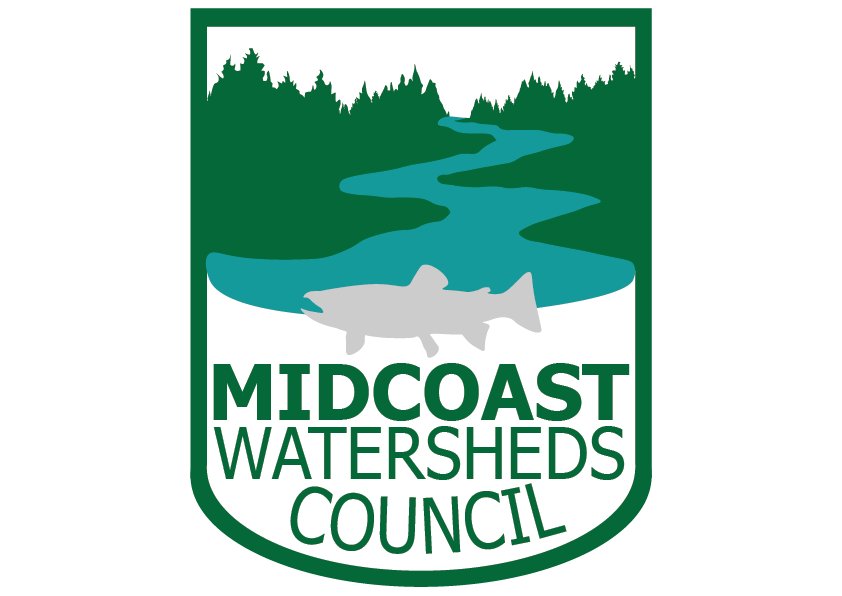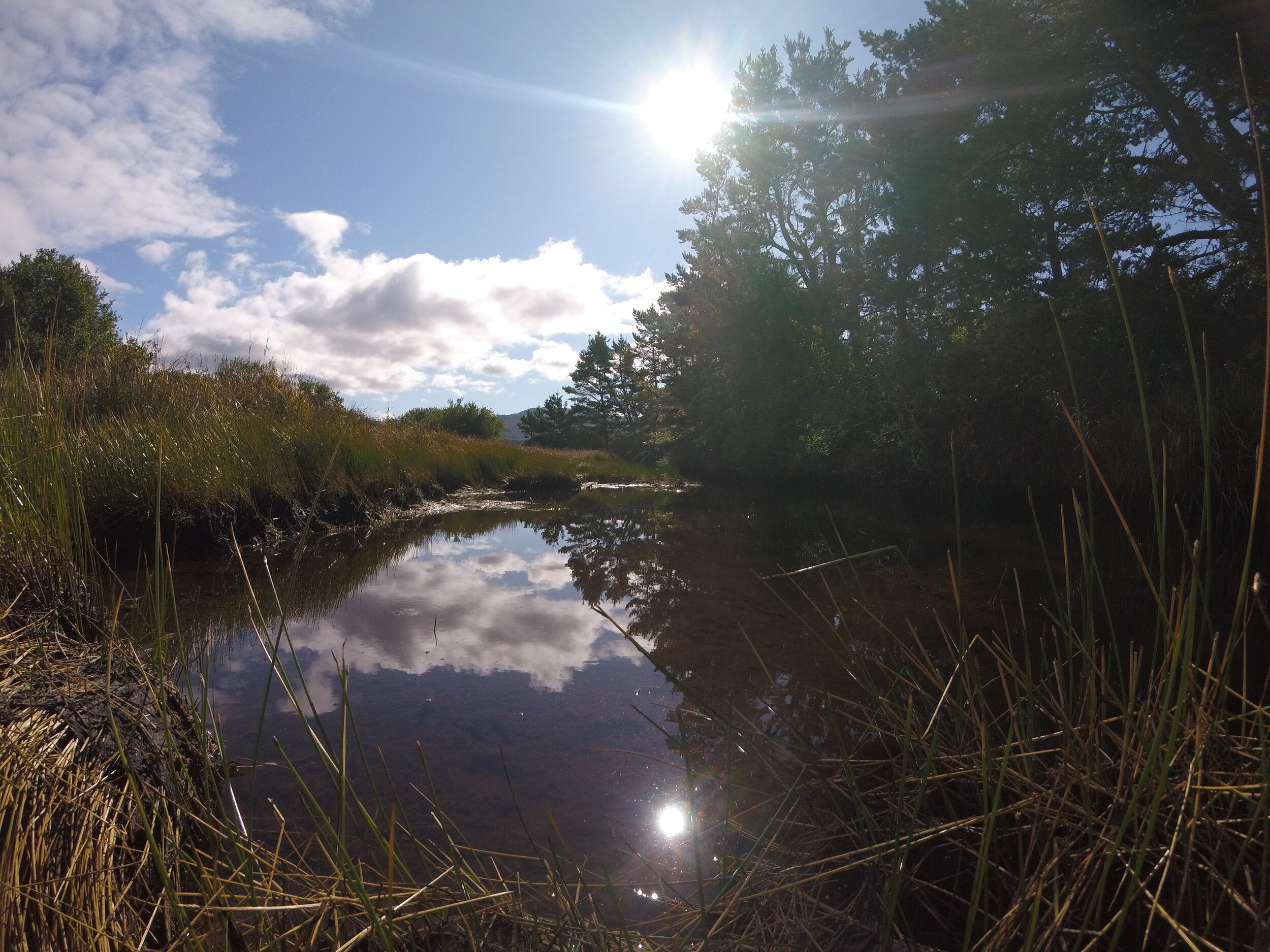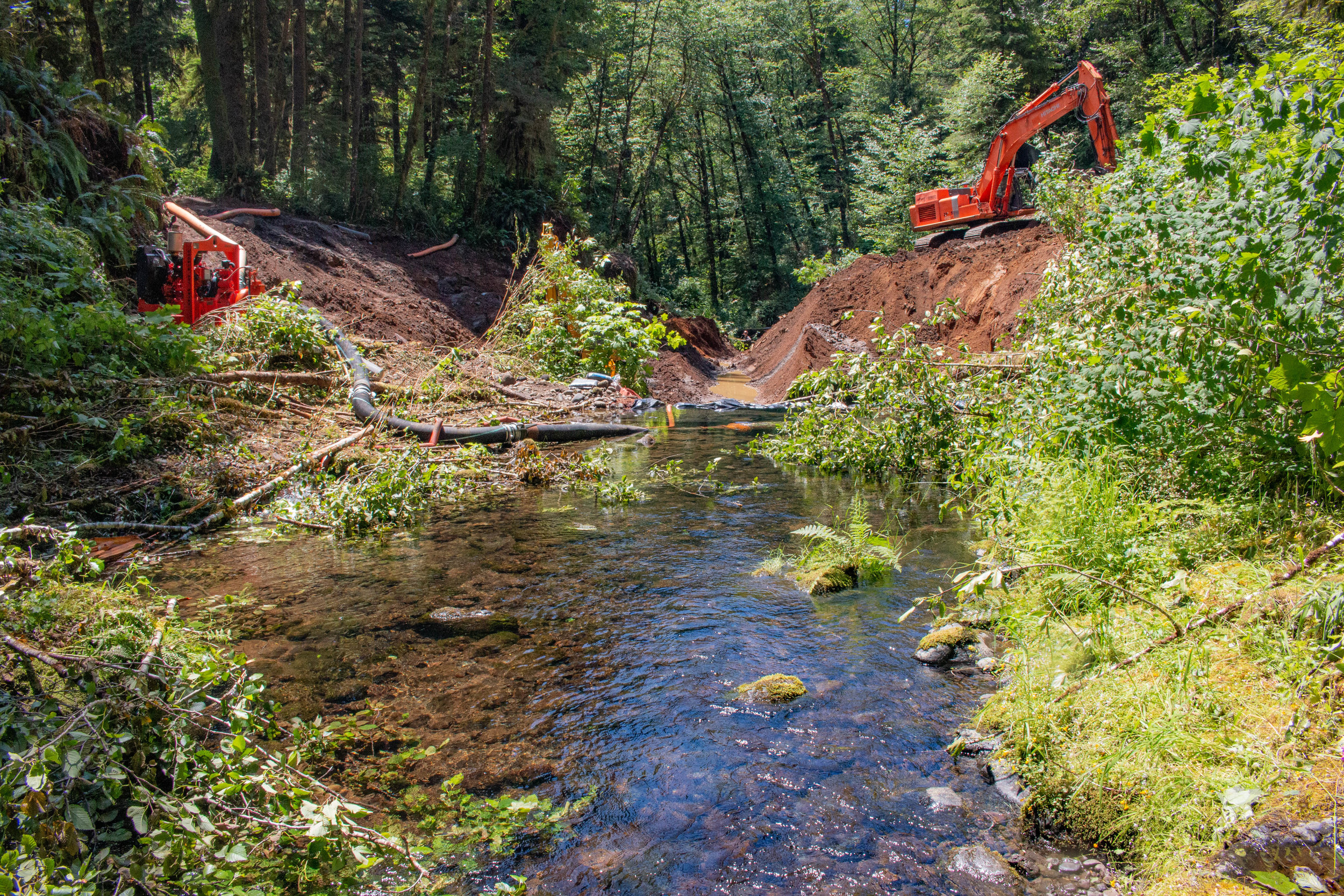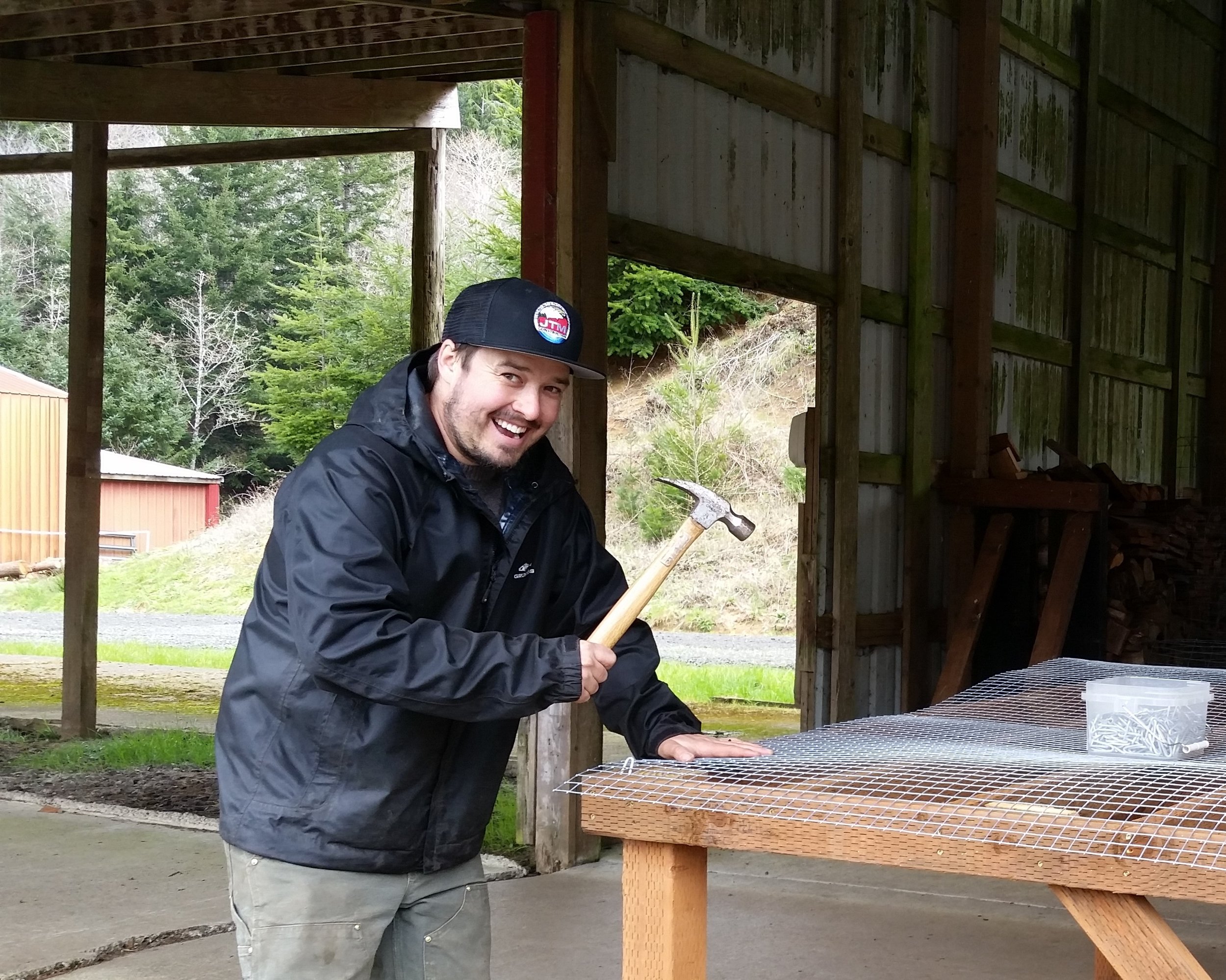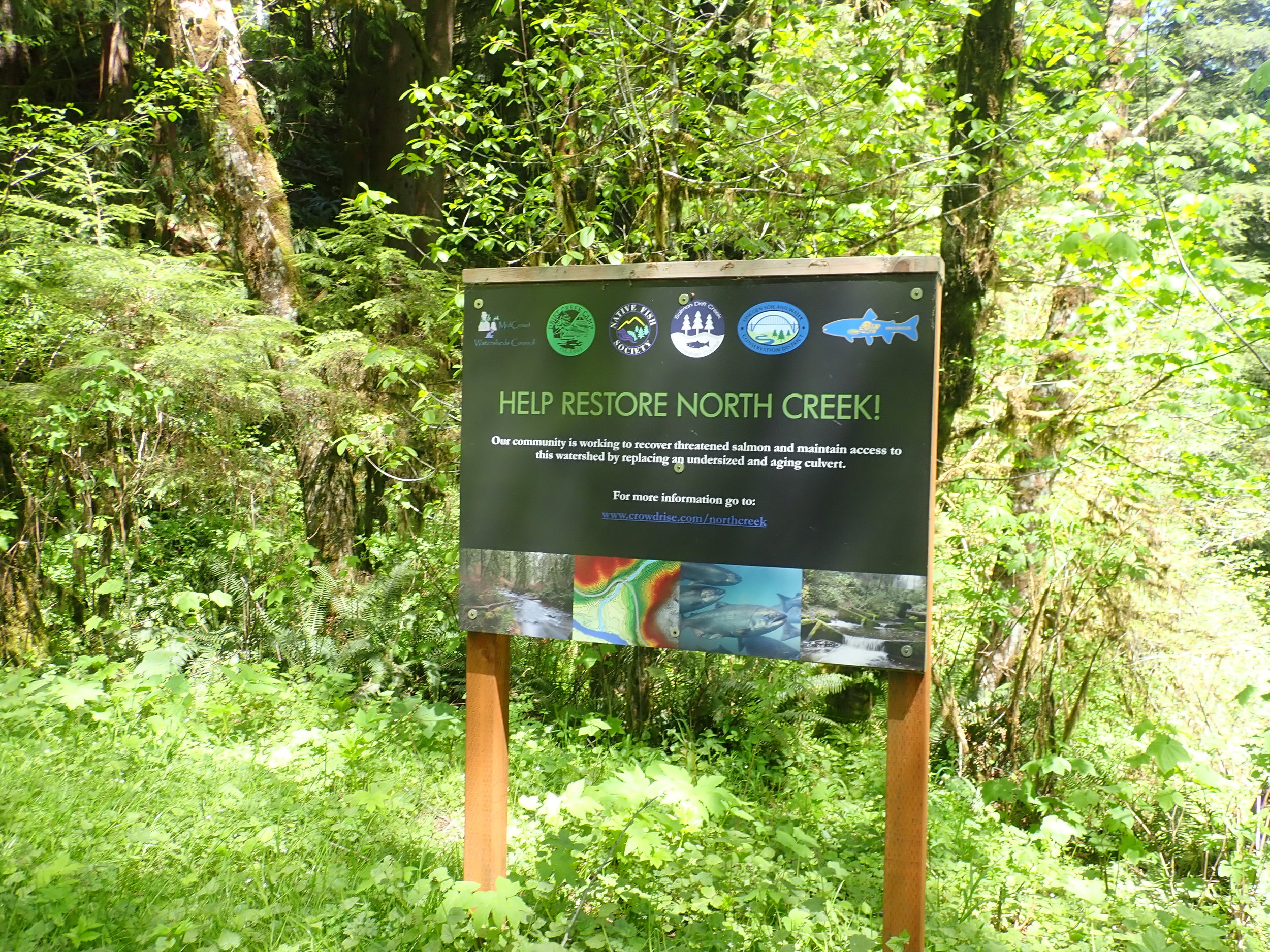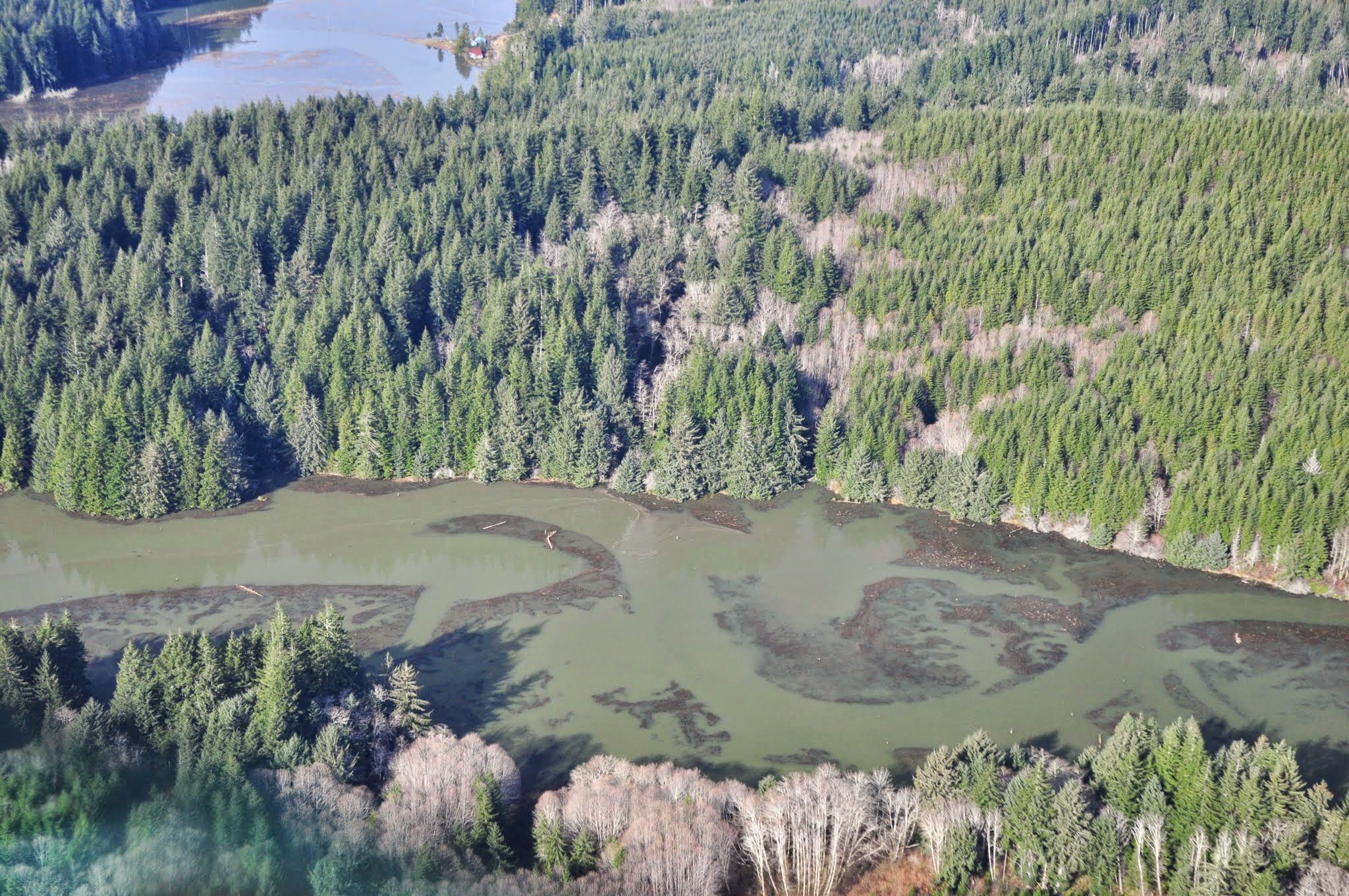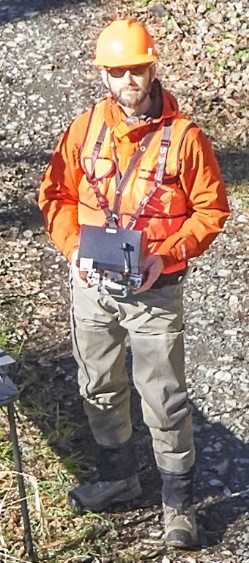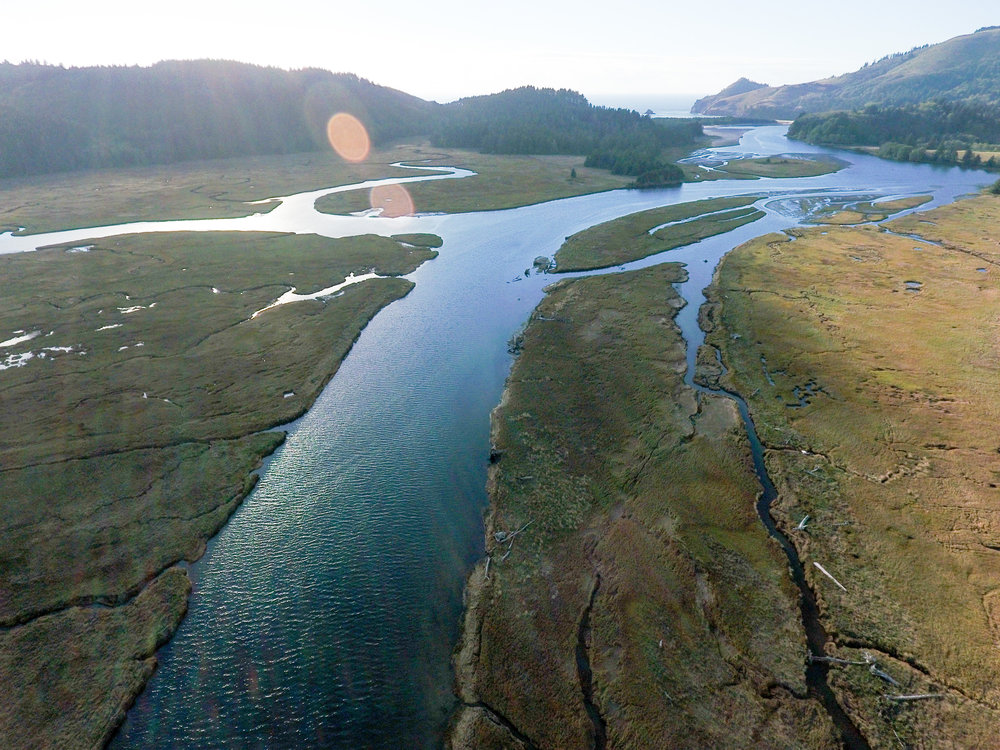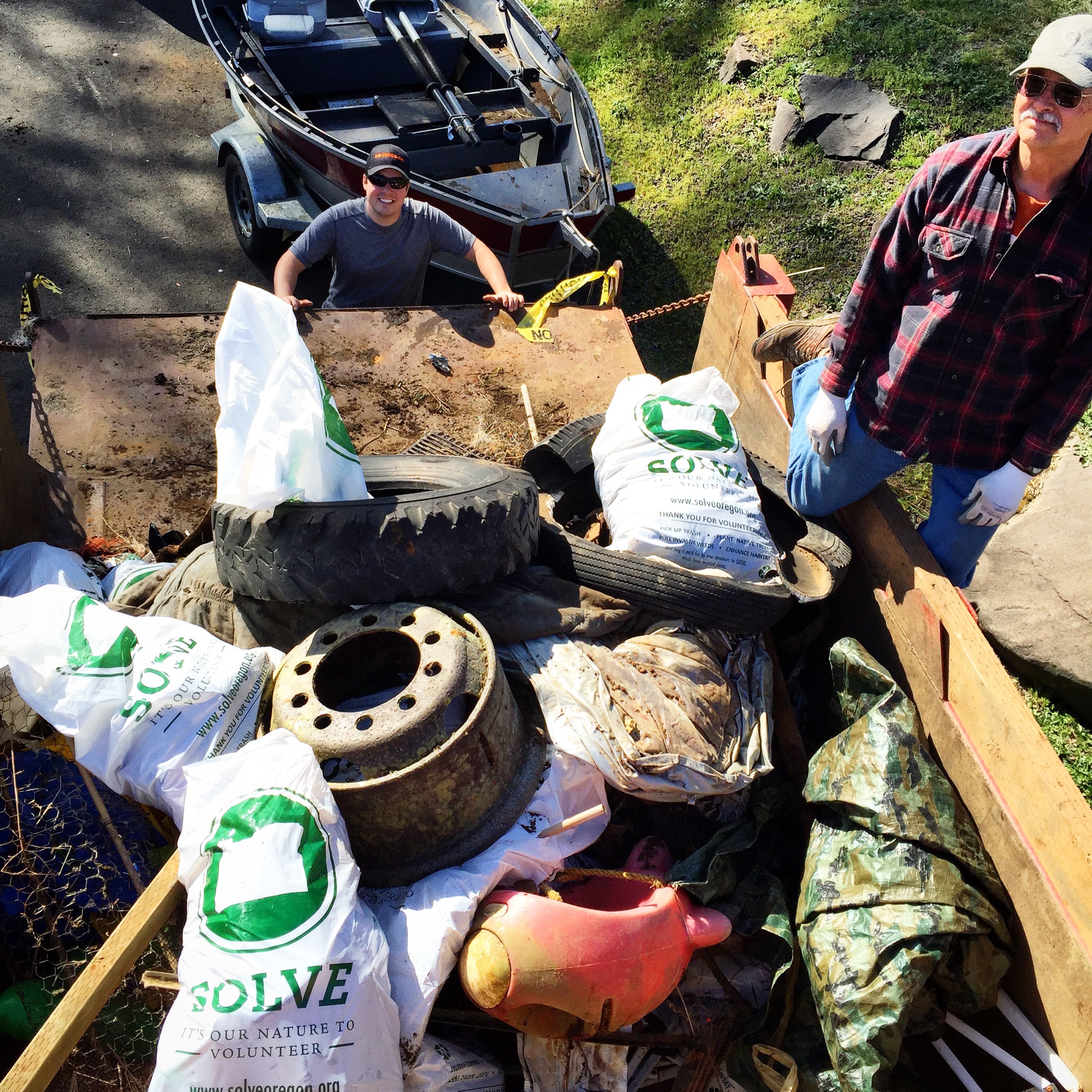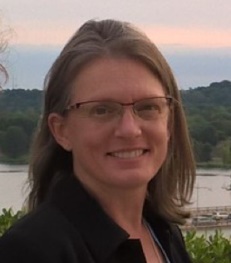North Creek, viewing downstream of the new culvert.
This summer a large open-bottom culvert was put in place on North Creek, a tributary to Drift Creek in the Siletz River Basin that will allow Chinook and coho salmon, along with steelhead, coastal cutthroat, lamprey, freshwater mussels, and other aquatic organisms to freely access sixteen miles of stream and wetland habitat in North Creek for the first time in 62 years. Habitat above the culvert is managed by the Siuslaw National Forest as a “late successional reserve” meaning that it is managed to provide older forest habitat conditions. According to Leah Tai, Siuslaw National Forest Hydrologist, these older forest characteristics provide excellent stream conditions as well. “North Creek has cold, clean water and lots of large trees that have fallen into the stream,” Tai explains. “These logs in turn provide cover for juvenile fish, slow water to collect spawning gravels, and create deep pools that provide refuge for both juvenile and adult fish.”
ODOT, MCWC, and USFS personnel view the placement of stream simulation under the new culvert to ensure they meet the engineered designs, meant to mimic a natural streambed.
The project, which began with extensive grant writing and fundraising in 2015, was managed by the MidCoast Watersheds Council (MCWC) in close coordination with the United States Forest Service (USFS). Many more collaborators assisted with funding, including the USFS, the U.S. Fish and Wildlife Service’s Fish Passage Program, Oregon Watershed Enhancement Board, the joint Oregon Department of TransportationOregon Department of Fish and Wildlife Fish Passage Program, Trout Unlimited, National Fish and Wildlife Foundation, as well as a crowdfunding campaign organized by the Native Fish Society. About $900,000 was spent on this project. It removed the old, severely undersized and rusted-through culvert and replaced it with an appropriately sized, open-bottomed structure. Unlike the old structure, the new culvert was designed so that it won’t create a velocity or passage barrier to fish and other animals, or to the downward transport of gravel and large wood, which will also improve Chinook spawning downstream. In addition to these ecological benefits, the culvert replacement allows for safe transport to and from popular forest recreation areas and Drift Creek Camp.Monitoring work is now underway to document changes and outcomes with additional help from Oregon Coast Community College’s Freshwater Habitats course and Trout Unlimited.
Installation of the last few segments of the new culvert.
Before road construction in 1958, small boulders, cobble, gravel, and large woody debris settled near the mouth of North Creek during large storm events. This created excellent salmon spawning and rearing habitat, and a home for a genetically distinct population of Chinook salmon. However, construction of Forest Road 1790 resulted in an inadequate culvert placed 750 feet above the confluence of North Creek with Drift Creek. This resulted in scour below the culvert, creating water velocities and a vertical jump too large for most fish and restricting the downward flow of the materials needed for spawning. As a result, high water velocity through the undersized culvert eroded stream cobble and gravel, leaving exposed bedrock instead of Chinook spawning areas. In 1961, the Oregon Fish Commission identified the North Creek culvert as a fish passage problem. Over the years, engineered fish passage improvement projects were attempted but all failed. Storm flows destroyed concrete lined pools below the culvert outlet in the early 1960's. Concrete weirs built in 1982 were unsuccessful even with modifications and the addition of boulders and large wood. Adult Chinook salmon have not been seen in North Creek for decades, and environmental DNA (eDNA) analysis conducted by Trout Unlimited in 2018 detected no Pacific lamprey—an ESA listed species—above the culvert.
Removal of a large amount of fill from the road surface above the old culvert was required prior to its removal.
Evan Hayduk, Watershed Coordinator for MCWC, managed the project. “It was amazing that after years of preparation and planning and fundraising, the work was actually done relatively quickly in a few months this summer,” says Hayduk. “Before removing the undersized 12 ft culvert and the dysfunctional concrete weirs, we had to first re-route the creek and rescue any fish so they didn’t get stranded.. All of that work was finished by the end of June. Then we installed the new huge 50 ft wide, 15 ft high, open-bottomed culvert in early August.” Other tasks completed during the summer included the installation of natural boulders and cobble in the streambed (called stream simulation), the seeding of native plants in disturbed areas, and the re-grading of Road 1790, which took place in September and early October. “We’re just about wrapped up now, with final construction clean-up work being done,” Hayduk continues, “fishermen and the Drift Creek Camp folks are happy to get back their access--They’ll all like the healthier salmon returns we soon hope to see too.”
Directly after the old culvert was removed.
This fall, students in Oregon Coast Community College’s Freshwater Habitats course will visit the North Creek restoration site six times to determine how the stream simulation changes as it faces its first storm events and identify how organisms like salmon and aquatic insects respond to the newly opened channel. In addition, volunteers with Trout Unlimited will continue eDNA sampling at 13 locations in the North Creek Watershed for two more years to determine the presence of difficult-to-survey target species such as lamprey and freshwater mussels. The efforts of these community partners will be complemented by stream temperature monitoring for three years by the USFS and the Environmental Protection Agency. The data resulting from monitoring work is expected to serve as an example for future large-scale aquatic organism passage projects.
View of the new 50 ft wide, 15 ft high culvert from inside.
